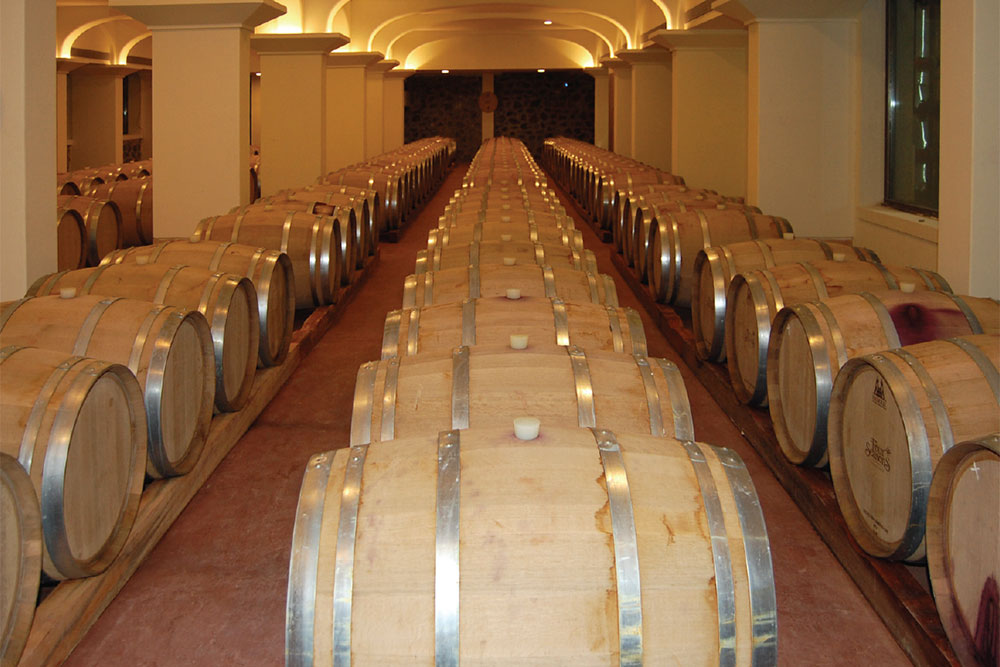I have always wanted to participate in the paganistic crushing of grapes for making wine, but with the harvest at its peak in Baramati, where Four Seasons has its impressive winery, winemaker Abhay Kewadkar clearly had other things on his agenda — and that did not include the shedding of shoes and stilettos to get down and dirty in a squelchy tub of sauvignon grapes. What we did, instead, is observe the extremely sterile process of grapes being transported from the vineyard in refrigerated vans, rolling down the conveyor belt with nitrogen capsules thrown in to keep the temperature cool while factory workers removed any remaining leaves, stems or spoilt and damaged grapes before they were crushed by machines, and moved to massive stills in which the fermentation would take place.
The winemaking process is a complex one, and the winery — arguably India’s most sophisticated — has it down pat: from crushing and storage in imported oak barrels to the perfect ageing, blending, bottling, labeling and so on, all of it fully automated, laying the foundations for a heritage that its premium brand Ritu — which may sound banal here in India, but has recall value in markets overseas for its two-syllable pronunciation — has been garnering internationally. And in 2013, in addition to its portfolio of Four Seasons wines, the winery will gradually introduce the Ritu label pan-India, as a superior alternate to its portfolio of Four Seasons wines.
Four Seasons and Ritu form part of Vijay Mallya’s staggering United Breweries range and consists of wines that Kewadkar claims as part of the Sahayadri terroir and consistent climate that, he insists, will give him a vintage year every year, a boast no one has been able to make in any other part of the world, but which he hopes to make good by marking each year on the label. (Internationally, vintage years enjoy exceptional value in terms of price, which is what makes Kewadkar’s claim audacious, though there is something to be said about the predictability of the weather in the Nashik valley, give or take the possibility of freak hailstorms, in which case, he says, he will not produce wines with those grapes.)
For the few of us fortunate to be the first guests at the winery — where wine tourism will be introduced a few months from now for those wanting to experience life on a vineyard complete with tastings of different varietals — it was an opportunity to pair food with wine: experimental and exploratory more than appropriate, but it did set the tenor for the sauvignon blanc (thumbs up), a viognier, and the cabernet sauvignon and barrique reserve, both reds that master of wine David Bird described as “full-bodied, complex with ageing potential”, adding what some of us might have echoed, “Well done!”
The dry, undulating countryside of the Ghats around the winery has a crisp climate ideal for sauvignon and chenin grapes (the late harvest chenic blanc proving itself an interesting aperitif wine for many), 50 acres put under cultivation by the company, with a further 300 acres planted under long-term contract with local farmers. The wine itself is made under the supervision of Bouvet Ladubay, the premium French winery that Mallya snapped up in 2006. Here, Kewadkar has laid the foundations of a great cellar — his earlier experience has been with the houses of Indage and Grover — with a barrel room, giant stills and processes that are a credit to India’s fledgling wine industry. But no orgiastic squelching about in vats of grapes — alas!
The author is a Delhi-based Writer and curator











